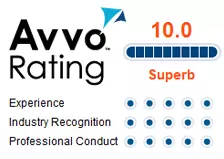What follows is an excerpt from an article that appeared in the Michgan Bar Journal. Click HERE to read the entire article.
With the advent of the Breathalyzer and its offspring, the DataMaster, field sobriety tests (“FSTs”) had taken a back seat in drunk driving prosecutions. However, now that the new drunk driving laws no longer contain the presumptions against impairment at blood alcohol levels above or below .081, the “observation testimony” of the arresting officer, including the suspect’s performance on FST’s, have suddenly become a much more important part of the prosecution’s case.
Now more than ever, competent drunk driving defense requires counsel to be knowledgeable regarding both the proper procedures for administering the FSTs and the “science” behind them.
THE SCIENCE BEHIND STANDARDIZED FST’S
A. The NHTSA Study
In the late 1970’s the National Highway Transportation Safety Administration (NHTSA) commissioned a study by the Southern California Research Institute (SCRI) to determine which FSTs were best out of the dozens being used around the country2. SCRI narrowed the list to six tests that it thought were the most feasible. It then recruited ten police officers to observe a couple hundred people who were given varying amounts of alcohol in a double-blind study (neither the officers nor the subjects knew how much alcohol they had been given). The officers’ only task was to determine whether each subject had a blood-alcohol level greater than .10 percent. That study resulted in NHTSA recommending use of the three tests considered standard today: (1) the horizontal gaze nystagmus; (2) the walk and turn; and (3) the one-leg stand.
Although that first NHTSA study recommended that police departments begin to use only the three standard tests, NHTSA acknowledged that the error rate of the officers in the study was 47%. In other words, the officer’s ability to detect which subjects had blood-alcohol contents greater than .10 percent was almost no better than flipping a coin.
1. MCLA § 257.625 et. seq., as amended effective September 30, 2003.
2. Burns & Maskowitz, Phycophysical Tests for DWI Arrests (1977) Final Report, DOT-HS-802-424, NHTSA.



